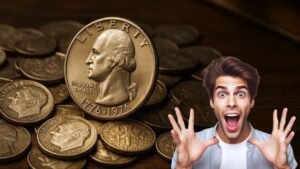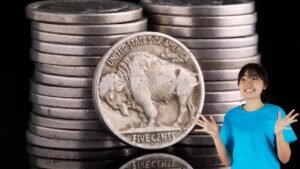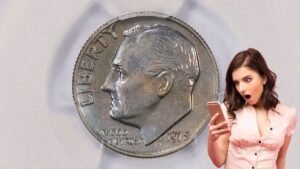Most people think of the $2 bill as just an unusual piece of pocket money, but some rare versions can be worth thousands. Recently, a 1976 $2 bill sold for $35,250 at auction, leaving collectors buzzing and everyday people eager to check their cash drawers. What made this ordinary-looking bill fetch such an extraordinary price? Let’s break it down.
Why the 1976 $2 Bill Is Special
The $2 bill was reissued in 1976 to mark the United States Bicentennial. It features Thomas Jefferson on the front and a depiction of the signing of the Declaration of Independence on the back. While billions were printed, most people rarely see them in circulation, which adds to their mystique.
For collectors, the 1976 issue stands out because:
- It marks a historic U.S. celebration.
- Many were saved as souvenirs instead of spent.
- Rare errors and serial numbers make certain bills extremely valuable.
Key Factors Behind Its $35,250 Price
Not every $2 bill is valuable, but certain traits can push one into the thousands. The record-setting note had:
- Fancy serial number (unique sequence collectors crave).
- Uncirculated condition with no folds or damage.
- Printing error, making it one of a kind.
These factors combined to drive fierce bidding, with the final price landing at $35,250.
Value Guide for 1976 $2 Bills
| Condition / Feature | Estimated Value Range |
|---|---|
| Regular circulated note | $2 – $5 |
| Crisp uncirculated | $15 – $50 |
| Fancy serial number | $100 – $2,000 |
| Major printing error | $5,000 – $25,000 |
| Rare combo (like auction note) | $35,000+ |
How to Check If Your $2 Bill Is Valuable
Wondering if your $2 bill could be worth more than face value? Here’s what to look for:
- Condition – Is it crisp, clean, and uncirculated?
- Serial number – Fancy numbers, star notes, or unique patterns raise value.
- Errors – Misaligned seals, ink smudges, or unusual printing.
- Rarity – Bills from certain Federal Reserve Banks may be scarcer.
If your bill checks several of these boxes, it’s worth getting it appraised or graded.
Growing Interest in Collectible Currency
The sale of the rare 1976 $2 bill reflects a growing trend. As digital payments take over, physical currency feels more historic and collectible. Younger collectors and investors are driving demand for rare notes, turning them into both sentimental keepsakes and profitable investments.
FAQs
Q1: Are all 1976 $2 bills valuable?
No, most are only worth $2, but rare serials, errors, or mint condition versions can be worth thousands.
Q2: What makes the $35,250 bill unique?
It had a rare serial number, pristine condition, and a printing error.
Q3: Where can I sell a rare $2 bill?
Auction houses, coin and currency dealers, or online collector platforms are the best options.
Q4: How do I know if my bill is uncirculated?
It should be crisp, with no folds, stains, or wear, and sharp printing.
Q5: Is it worth grading my 1976 $2 bill?
Yes, professional grading confirms authenticity and maximizes resale value.
Conclusion
The rare 1976 $2 bill that sold for $35,250 proves that hidden treasures can still be found in ordinary places. While most $2 bills are worth just face value, those with special serials, printing errors, or pristine condition can be worth life-changing amounts. Next time you come across one, don’t spend it without a second look—it could be worth far more than two dollars.



